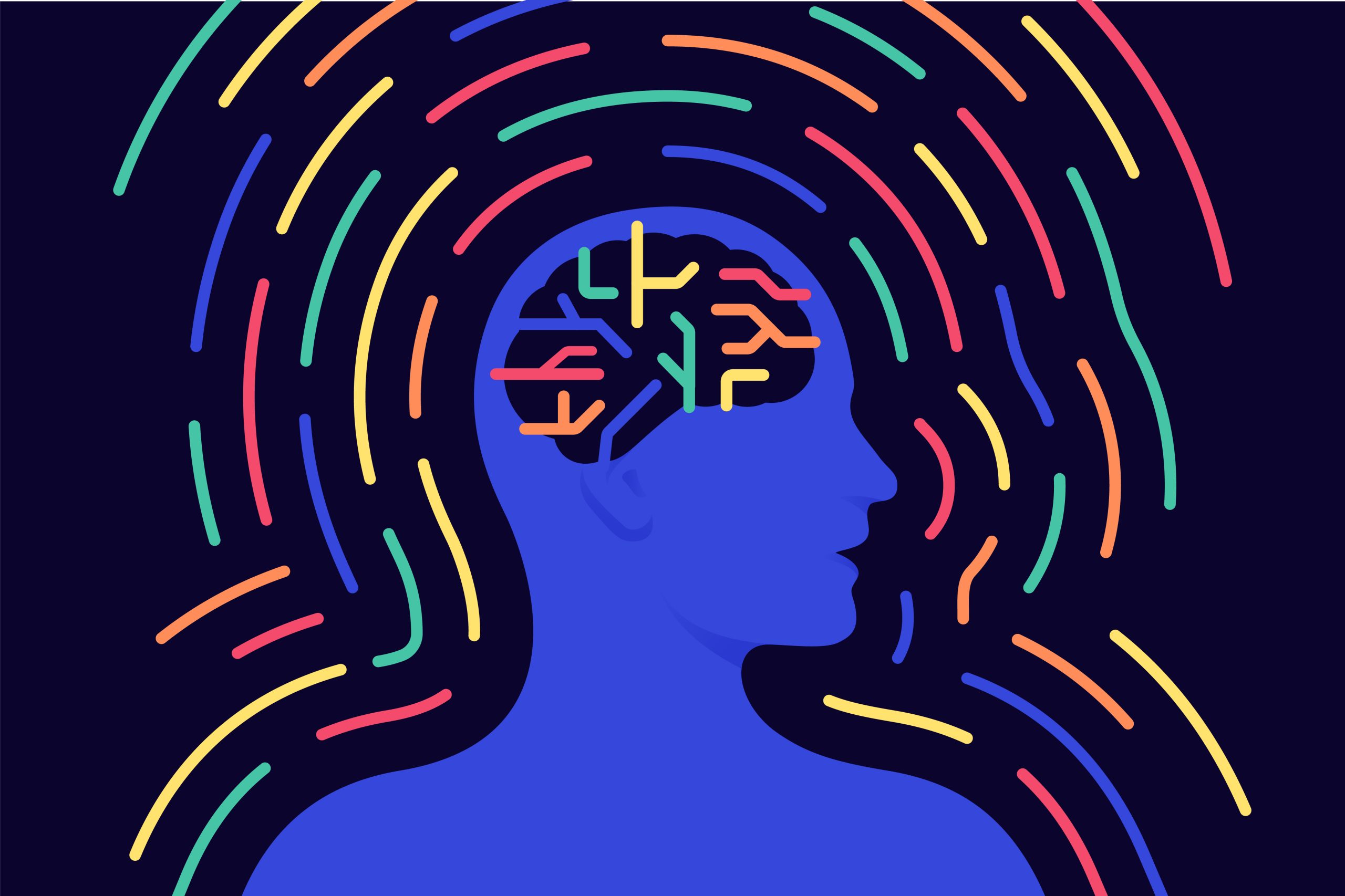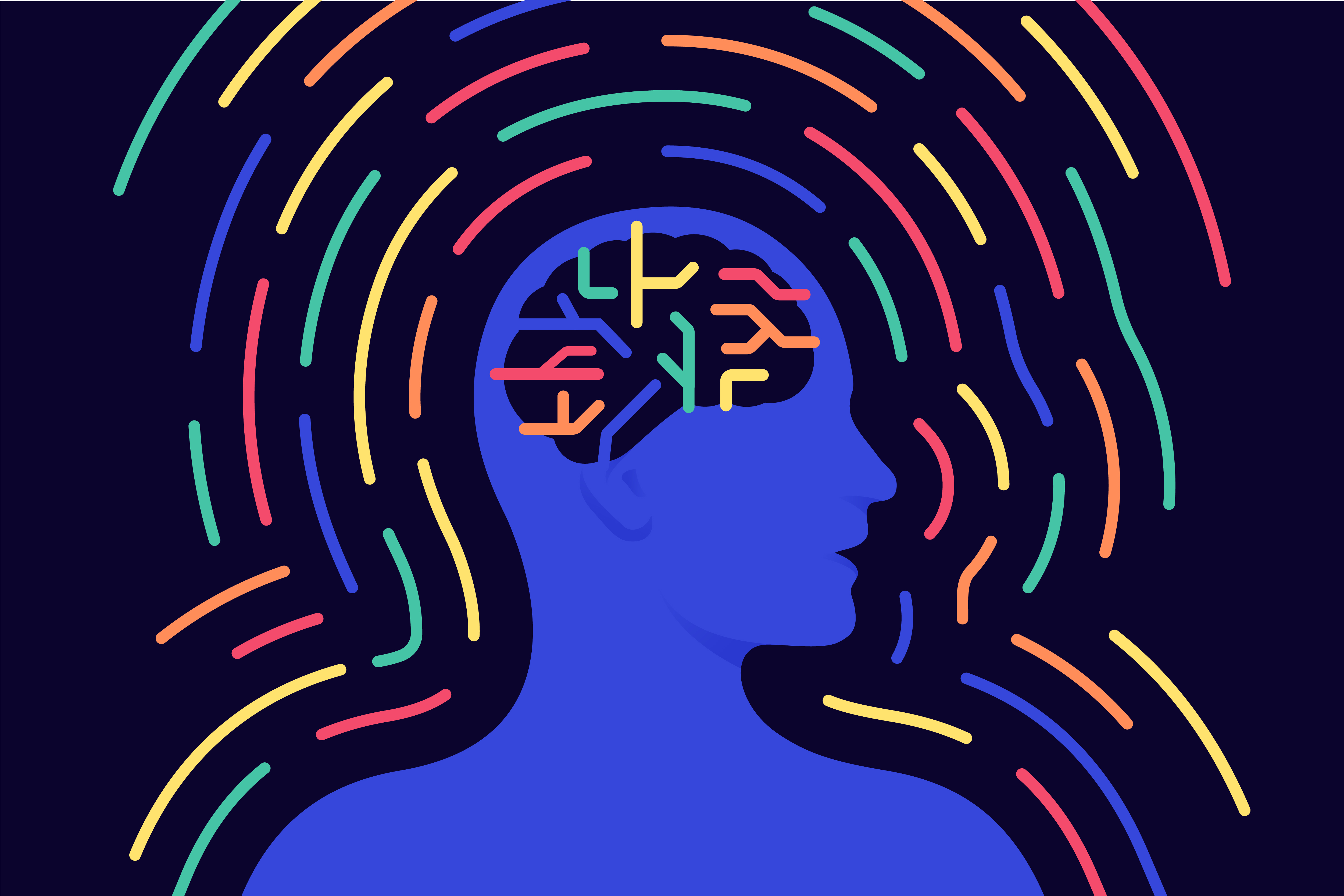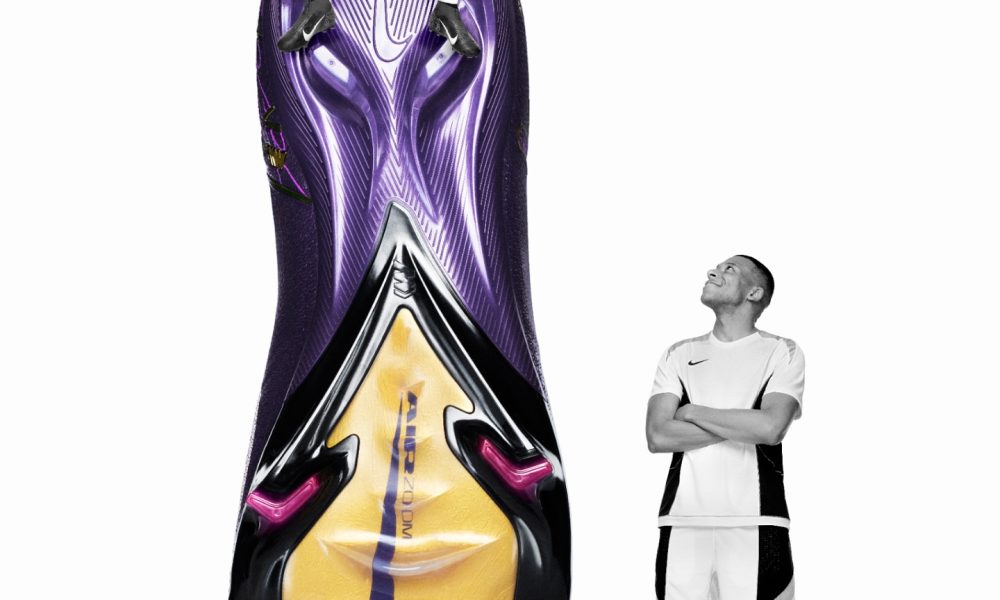Sports
'Mind



And the sea resident is far from the only victim of the affliction.
When tainted sardines and other critters are consumed by marine mammals, the acid causes them to become aggressive and unpredictable, among other symptoms.
For LaMendola, that realization made his encounter tragic as well as terrifying.
“Today, I endured the most harrowing and traumatic experience of my 20 years of surfing,” photographer and explorer Rj LaMendola captioned the post while recalling the attack.
He added, “I barely dodged that first charge, my breath catching as I spun around, desperate to head for shore.”
Marine life care centers across Southern California are reporting an increase in the number of stranded dolphins and sick seals, which they’ve attributed to the toxic algal scourge.
He thought his fate was seal-ed.
Like the moment after a horror movie’s false climax, the sea lion charged again with its “teeth bared” akin to “some deranged predator,” he said.
The blubbery beast then disappeared back into the drink from whence it came — but that was only the beginning of the beatdown.
LaMendola subsequently drove himself to the emergency room, where he is recovering from the ordeal.
“This time, it slammed into my board with unbelievable force, diving beneath me in a swift, fluid arc that sent a shiver down my spine,” wrote LaMendola, who realized it was no “playful encounter.”
Dubbed Pseudo-nitzschia, this organism can produce a neurotoxin called domoic acid (DA), which can accumulate in “filter-feeding shellfish, finfish and zooplankton,” according to the U.S. National Office for Harmful Algae Blooms.
During one of the four or so confrontations, LaMendola attempted to sock his assailant, only for it to dodge the “clumsy” strike with “eerie agility.” The animal then wheeled around and clamped its jaws around the waterman’s “left butt cheek,” before dragging him off his board and into the drink.
The Ventura resident said he was surfing about 150 yards from the shore at Oxnard State Beach Park when, “out of nowhere,” the mammal “erupted from the water” and hurtled at him full speed like an aquatic “Cujo.”
“Domoic acid can cause animals to act erratically, and they can be dangerous when affected by the neurotoxin,” NOAA spokesperson Michael Milstein told SFGate.com.
It’s not just sharks that surfers have to watch out for these days. A California wave-shredder was “shaken” to his core after being mauled by a sea lion that was purportedly “warped” by toxic algae plaguing the coast, as detailed in a Facebook post making a splash online.
After a grueling interspecies battle, LaMendola finally managed to swim to shore, claiming that the incensed squid-swallower didn’t stop stalking and charging him until his feet “finally scraped the sand.”
Meanwhile, humans who consume seafood contaminated with domoic acid can suffer from amnesic shellfish poisoning (ASP), which can cause symptoms ranging from gastrointestinal illness to seizures and even death.
When he contacted the Channel Islands Marine and Wildlife Institute to report the attack, researchers replied that they’d seen a surge in incidents across Santa Barbara and Ventura County involving “sea lions and other marine animals affected by Domoic Acid Toxicosis” — a neurological disorder caused by toxic algae.
“I don’t know how to describe the fear that gripped me in that moment,” recalled the survivor. “So far from shore, so helpless, staring into the face of this creature that looked like nothing I’d ever seen — its expression was feral, almost demonic, devoid of the curiosity or playfulness I’d always associated with sea lions.”
The victim’s suit was “shredded” where it had bitten him, he shared, exposing a “puncture wound” from which blood trickled down his leg and hit the sand.
“This was something else entirely — something wrong,” said the shaken boarder.
“Its mouth gaped wide, teeth flashing, and its eyes locked onto me with an unsettling ferocity,” recalled the shocked surfer. “My heart lurched as I instinctively yanked my board to the side, paddling frantically to evade it as it barreled forward, intent on crashing into me.”
“The sea lion that attacked me wasn’t just acting out — it was sick, its mind warped by this poison coursing through its system,” he said. “Knowing that doesn’t erase the terror, but it adds a layer of sadness to the fear.”
However, that started a vicious cycle where the possessed critter would repeatedly back off and charge at the helpless surfer, forcing him to shield himself with his board and swim back to shore between attacks.
“There is no known antidote or cure for ASP, and while recovery is possible, some of the effects of domoic acid in humans can be permanent,” the U.S. National Office for Harmful Algae Blooms writes.
Sports
Track and Field Restricts Meet to Rostered Collegiate Athletes, Shutting Out Club Athletes

The Greg Page Relays, an annual indoor track and field competition hosted by the men’s and women’s track team that marks the beginning of the indoor track season on Friday and Saturday, December 5-6, will no longer be open to unattached or club athletes.
Meet information previously stated that the event was “open to all athletes that are currently eligible.” It has since been updated to specify participants are limited to those who are “currently eligible and actively rostered student-athletes at NCAA and NJCAA institutions only,” according to previously posted information about the meet on the Cornell University Athletics website.
The Greg Page Relays were historically an opportunity for club or unattached athletes to compete in officially timed meets. Unattached athletes were required to pay an entry fee of at least $40 per person. Results from these official meets are crucial to athletes hoping to gain the interest of varsity teams.
“Greg Page Relays has often been a proving ground for underclassmen athletes looking to make it onto the varsity team,” said Lucas Corea ’26, a member of the Cornell Running Club. “It is an environment that provides a golden opportunity to perform against varsity collegiate athletes across all divisions and most importantly other varsity athletes on the Cornell team.”
Callum Coots ’27 is also a member of CRC and previously competed in the Greg Page Relays as well as the Marc Deneault Invitational, which also recently limited its entry to NCAA and NJAA rostered athletes, according to information about the meet from Cornell Athletics. He also participated in the Big Red Invitational, which has not posted information about eligibility for the meet.
For Coots, the chance to compete is “incredibly valuable” for his development as a runner.
“These meets have provided me opportunities to build my case as a hopeful walk-on and get noticed by coaches,” Coots said. “They have also allowed me to have a full track season with meets every few weeks.”
According to a Cornell spokesperson, the currently posted information is incorrect and will be updated to ensure that collegiate teams “understand the proper entry procedures.”
“To best meet our team’s competitive needs, the Greg Page Relays and Multi Meet are open to collegiate teams by invitation only,” a Cornell spokesperson wrote in an email statement to The Sun. “Our varsity rosters are set for the year. Other opportunities are available within the region for unattached athletes to compete.”
When asked why the decision was made to change the eligibility of the meets, the University did not directly answer, but stated that the change is “not related” to the University’s settlement with the federal government.
In the $60 million settlement with the Trump administration, Cornell agreed to the U.S. Department of Justice’s guidelines including Title IX guidelines pertaining to transgender athletes in sports and more as “unlawful.”
USA Track and Field hosts one other official timed indoor meet, the Niagara Open and Masters Indoor Track and Field Championships on January 18.
“Overall, I am losing the ability to compete at a high level at my own school,” Coots said. “The new eligibility rule makes it impossible for me to compete in Cornell-hosted meets like the Greg Page Relays.”
Zeinab Faraj is a member of the class of 2028 in the College of Arts and Sciences. She is the features editor on the 143rd Editorial Board and was the assistant sports editor of the 143rd Editorial Board. You can reach her at zfaraj@cornellsun.com.
Read More
Sports
Wisconsin vs EIU in NCAA volleyball; recap as Badgers sweep Panthers
8:05 am CT December 5, 2025
More to read from Wisconsin’s NCAA tournament match against Eastern Illinois
John Steppe
9:09 pm CT December 4, 2025
Wisconsin stats leaders vs Eastern Illinois
John Steppe
- Kills: Mimi Colyer and Una Vajagic with 10
- Hitting percentage: Trinity Shadd-Ceres with 1.000 hitting percentage on four total attacks
- Service aces: Kristen Simon and Charlie Fuerbringer with two
- Assists: Charlie Fuerbringer with 35
- Digs: Kristen Simon with 15
- Total blocks: Alicia Andrew and Charlie Fuerbringer with four each
8:31 pm CT December 4, 2025
Who does Wisconsin play next in NCAA tournament?
John Steppe
Wisconsin will face North Carolina in the second round of the NCAA tournament after the third-seeded Badgers swept Eastern Illinois. North Carolina upset sixth-seeded UTEP in the first round before Wisconsin’s match.
The match will be Dec. 5 at 7 p.m. and air on ESPN+.
8:29 pm CT December 4, 2025
Wisconsin completes sweep vs Eastern Illinois
John Steppe
For the 13th time in Kelly Sheffield’s 13 seasons as Wisconsin head coach, the Badgers are advancing to the second round of the NCAA tournament. Wisconsin won the third set, 25-19, to complete the sweep over Eastern Illinois. The Panthers went on a 4-0 scoring run before UW finally put it away with a kill by Tosia Serafinowska.
8:23 pm CT December 4, 2025
Wisconsin has 19-11 lead in third set vs Eastern Illinois
John Steppe
Wisconsin is on a 3-0 scoring run as a sweep is pretty much inevitable. Mimi Colyer is up to 10 kills, extending her streak to 16 consecutive matches with at least 10 kills. (Her only match without 10-plus kills was on Oct. 10 as the Badgers were swept by Penn State.)
8:18 pm CT December 4, 2025
Eastern Illinois appears more competitive in third set, but Badgers still have nice lead
John Steppe
After scoring only six points in the second set, Eastern Illinois already has nine points in the third set. UW is hitting its worst percentage of the match at a still-very-respectable .348 and has more service errors in this set (three) than in the first two sets combined (one).
8:03 pm CT December 4, 2025
See the replay of Trinity Shadd-Ceres’ second kill of match
John Steppe
8:01 pm CT December 4, 2025
Wisconsin vs Eastern Illinois stats comparison through first two sets
John Steppe
- Kills: Wisconsin 30, Eastern Illinois 10
- Hitting percentage: Wisconsin .510, Eastern Illinois minus-.033
- Blocks: Wisconsin 5, Eastern Illinois 2
- Service aces: Wisconsin 5, Eastern Illinois 1
7:57 pm CT December 4, 2025
Wisconsin dominates Eastern Illinois in second set, wins 25-6
John Steppe
Wisconsin’s second set was its most lopsided one of the season.
The Badgers held Eastern Illinois to minus-.077 hitting and took the set, 25-6. Mimi Colyer had an extended service run at the end. Madison Quest and Trinity Shadd-Ceres subbed in later in the set and made a quick impact. Shadd-Ceres had a pair of kills to make it 24-6 before an EIU attack error clinched the set for the Badgers.
7:33 pm CT December 4, 2025
Wisconsin takes first set vs Eastern Illinois, 25-11
John Steppe
Wisconsin unsurprisingly has an obvious talent advantage here. The Badgers hit .480 in the first set while Eastern Illinois hit .000. Mimi Colyer had six kills without any attack errors. Una Vajagic has five kills, but she also has three attack errors.
It would be even more lopsided if UW had not gotten a little sloppy later in the set. UW at one point had a 17-3 lead.
7:24 pm CT December 4, 2025
Wisconsin goes on 5-0 scoring run, takes 17-3 lead in first set vs Eastern Illinois
John Steppe
This could be a very fast match.
Wisconsin has a 17-3 lead over Eastern Illinois. UW is hitting .750 while EIU is hitting minus-.211. EIU is siding out only 12.5% of the time.
7:11 pm CT December 4, 2025
Wisconsin setter Addy Horner not in uniform vs Eastern Illinois
John Steppe
Wisconsin backup setter Addy Horner was in sweatpants during starting lineups. Charlie Fuerbringer, of course, is starting.
7:07 pm CT December 4, 2025
When will Wisconsin vs. Eastern Illinois begin?
John Steppe
The official start time for the Wisconsin-Eastern Illinois match is 7:12 p.m. CT. There was a 30-minute break after the UTEP-North Carolina match.
6:58 pm CT December 4, 2025
Wisconsin pregame notes ahead of playing Eastern Illinois in first round
John Steppe
- Wisconsin has not lost to an unranked opponent this season.
- The Badgers only lost two sets in the entire month of November.
- Every year in the Kelly Sheffield era, Wisconsin has advanced to at least the regional semifinals (or Sweet 16).
- UW’s .317 hitting percentage is second-best in the country, trailing only Nebraska. It also is at pace to finish as the second-highest hitting percentage in UW program history.
6:33 pm CT December 4, 2025
North Carolina topples UTEP in four sets, Wisconsin match to begin at roughly 7 p.m.
John Steppe
The anticipated 7 p.m. start will be pretty close to accurate after North Carolina toppled sixth-seeded UTEP in four sets. There is a 30-minute break before Wisconsin’s match against Eastern Illinois gets underway.
6:30 pm CT December 4, 2025
What is Wisconsin’s all-time record against Eastern Illinois?
John Steppe
Wisconsin is 4-2 overall all-time against Eastern Illinois. The Badgers have not faced the Panthers in the last three decades, though. Here are all the all-time matchups:
- Sept. 22, 1978: Loss in three sets
- Sept. 3, 1983: Win in four sets
- Aug. 31, 1984: Loss in three sets
- Sept. 2, 1988: Win in four sets
- Sept. 9, 1994: Win in three sets
- Sept. 15, 1995: Win in three sets
5:52 pm CT December 4, 2025
Who will Wisconsin volleyball play next if/when it defeats Eastern Illinois?
John Steppe
The winner of the Wisconsin-Eastern Illinois match will play the winner of the UTEP-North Carolina match. The second-round match will be Dec. 5 at 7 p.m. at the UW Field House. The Badgers have yet to lose a first or second-round match in the Kelly Sheffield era.
5:30 pm CT December 4, 2025
How to watch Wisconsin vs Eastern Illinois NCAA tournament match
John Steppe
- TV: none
- Streaming: ESPN+, which requires a subscription.
Sports
BC Opens Indoor Season at Sharon Colyear-Danville

Last year’s attempt at the Sharon Colyear-Danville Season Opener saw five top ten marks set at the BU Track & Tennis Center. Kyla Palmer ran the second fastest 600m in program history, while Kylee Bernard and Ava Carter recorded top five marks in the 300m.
Following this weekend, the team has a month long break before returning for the Suffolk Ice Breaker Challenge, held at the TRACK at New Balance on January 18.
Sharon Colyear-Danville Season Opener
Saturday, Dec. 6 | 9:30 a.m. | Boston, Mass. – BU Track & Tennis Center
Live Results | Watch | Meet Info
Eagles Competing: Elizabeth Barlow, Anna Becker, Kylee Bernard, Iris Bergman, Ellie Buckley, Ava Carter, Gina Certo, Claire Crowley, Ella Fadil, Erin Finley, Imogen Gardiner, Gabrielle Hamel, Kyra Holland, Hanna Hollins, Kyla Palmer, Sydney Segalla, Anna Sonsini, Yaroslava Yalysovetska, Ron-Niah Wright
Sports
Mountaineers Open Indoor Season at the Visit Winston-Salem College Kick-Off

BOONE, N.C. – The App State women’s track and field team launches the 2025-26 indoor season at the Visit Winston-Salem College Kick-Off at the JDL Fast Track on Saturday. Field events will start at 9:30 a.m., and track events are scheduled to begin at 10 a.m.
Twenty-five Mountaineers return to the High Country after guiding App State to a third-place finish at the 2025 Sun Belt Indoor Championships, the best team finish for the Black and Gold since winning the title in 2016. Lilly Nichols, who set the school, conference, and Polish U20 women’s indoor pole vault record with a clearance of 4.26m (13′ 11.75″) in her collegiate debut, returns for her sophomore season. The Broomfield, Colo., native secured silver and earned Second-Team All-SBC honors in the women’s pole vault with 4.18m (13′ 8.5″) at last year’s indoor championship. Joining Nichols in the pole vault and returning for her senior season is Ava Studney. Studney matched Suzanne Makinson’s 2004 clearance of 4.06m (13′ 3.75″) during the 2024 campaign and stands tied for second on the App State all-time list. She also finished sixth at the conference championship last year with a clearance of 3.73m (12′ 2.75″).
Sprinters Kendall Johnson, Nicole Wells and Jayla Adams return for their junior seasons. Johnson set the school record with a time of 7.42 in the women’s 60-meter prelims at the SBC Championship and finished seventh overall in the final with a time of 7.51. The previous record was 7.44, set in 2005 by Jennifer Claud. Additionally, Johnson, alongside Addison Ollendick-Smith, Ja’Naya Linder and Adams, earned Second-Team All-SBC honors for their performance in the women’s 4×400-meter relay at the conference championship. The quartet stopped the clock at 3:45.19, coming within two seconds of the program record of 3:43.85, which was set at the 2023 Sun Belt Indoor Championships.
Ollendick-Smith, who holds the program record in the women’s 600 meters (1:33.95) and stands second all-time in the women’s 800 meters (2:11.13), returns for her senior season, specializing in mid-distance events. In addition to helping the Mountaineers to a second-place finish in the women’s 4×400-meter relay, she was a part of the women’s distance medley relay team that also secured silver at the conference championship meet with a time of 11:35.52.
Junior Rhys Ammon and sophomore Savannah Moore return to the track for the Mountaineers’ distance squad this year. The duo secured spots in both the women’s 600 meters and women’s 1,000 meters last winter, with Moore leading the way, ranking second all-time in the 600 meters (1:36.45) and third all-time in the 1,000 meters (2:57.90). Junior Dianna Boykin and sophomores Emily Edwards and Brittany Ellis make their returns for App State’s throws squad. Boykin and Ellis both recorded personal bests in the women’s weight throw with marks of 14.20m (46′ 7.25″) and 12.86m (42′ 2.25″), respectively at the SBC meet. Edwards led the team in the shot put last season with a personal best mark of 12.57m (41′ 3″), which she set at the 2025 Virginia Tech Invitational.
For the 2025-26 campaign, thirteen newcomers will don the Black and Gold. Senior Damyja Alejandro-Ortiz, who spent three seasons at Lenoir-Rhyne, and sophomore Micayla Collins, who spent her freshman season at Virginia Tech, joins App State’s sprints squad alongside freshman Tatiana Blake. Freshmen Alana Braxton, Kelly MacBride, and Ashlynn Wimberly will specialize in the jumps events this season. Distance freshmen Josie Jackson, Allie Kinlaw, Tessa Massa, Julia Mayer, Elizabeth McCart, Lika Strydom, and Ashby Williams are set to step onto the track after making their collegiate debuts on the cross country course this fall. Massa, Jackson, and McCart earned All-SBC honors after helping the Mountaineer women to their second consecutive Sun Belt Cross Country team title. Additionally, Massa was tabbed as the Sun Belt Women’s Cross Country Freshman of the Year for her efforts.
On Deck
App State’s indoor season will resume on Saturday, Jan. 10, with the UNC Asheville Collegiate Opener at Tryon International in Mill Spring, N.C.
Sports
Track & Field Prepares for Sharon Colyear-Danville Season Opener

The Track & Tennis Center will host some of the top athletes in the world over the course of the day, including a 90-minute “FloTrack Night in America” session featuring top heats in mid-distance and distance events beginning at 3 p.m.
During the meet, the Terriers will honor the late Sharon Colyear-Danville ’83, who passed away in 2024. The two-time Olympian and BU Hall of Famer’s legacy will be honored with a ceremony at approximately 9:40 a.m. with her husband of 43 years Bob Danville and their two sons, Reid and Neil Danville, in attendance.
How to Watch
FloTrack brings you live coverage of the track events from the Sharon Colyear-Danville Season Opener. Catch all of the action and start your subscription today! SIGN UP HERE: https://flosports.link/3HPCJzR. In addition to live race coverage you’ll gain access to track news, events, original content, and more.
How To Watch: Sharon Colyear-Danville Season Opener
When: Saturday, December 6
TV: Download the FloSports TV app on Roku, Apple TV, Amazon Fire TV, and Chromecast
Mobile: Download the FloSports iOS and Android apps
Web: Bookmark FloTrack.org in your favorite browser
Parking Advisory
Indoor Track & Field – Sharon Colyear-Danville Season Opener (Track & Tennis Center) – 10 a.m.
Very limited parking is available at an event rate of $14 in the Langsam Garage (LOT B) located at 142 Gardner St., Boston, MA 02215. Those arriving after 8:30 a.m. should proceed directly to the Essex Street Garage & Lot (LOT F) located at 148 Essex Street, Brookline, MA 02446.
Track Schedule (Faster heats first):
9:45 a.m. Women’s 60H FINAL
9:50 a.m. Men’s 60H FINAL
9:55 a.m. Men’s 60m Trials
10:00 a.m. Women’s 400m
10:05 a.m. Men’s 400m
10:15 a.m. Women’s 600m
10:25 a.m. Men’s 600m
10:35 a.m. Women’s 300m
10:45 a.m. Men’s 300m
10:57 a.m. Women’s 60m Final
11:00 a.m. Men’s 60m Final
11:05 a.m. Women’s 800m
11:12 a.m. Men’s 800m
11:18 a.m. Women’s 200m
11:25 a.m. Men’s 200m
11:35 a.m. Women’s 4x400m
11:40 a.m. Men’s 4x400m
12:00 p.m. Women’s Mile
12:20 p.m. Men’s Mile
12:55 p.m. Women’s 3k
1:40 p.m. Men’s 3k
2:55pm – Start of FloTrack Night in America (elite window)
3:00 p.m. Women’s 800m Invite
3:05 p.m. Men’s 800m Invite
3:11 p.m. Women’s Mile Invite
3:19 p.m. Men’s Mile Invite
3:27 p.m. Women’s 3k Invite
3:39 p.m. Men’s 3k Invite
3:52 p.m. Women’s 5k Invite
4:13 p.m. Men’s 5k Invite
4:29 p.m. Men’s 600m Invite
4:30 p.m. Women’s Open 5k (9 HEATS)
7:15 p.m. Men’s Open 5k (9 HEATS)
Field Schedule (Best flights last):
Rolling start beginning at 11 a.m.
Women’s High Jump followed by Men’s High Jump
Women’s Shot Put followed by Men’s Shot Put
Women’s Pole Vault followed by Men’s Pole Vault
Women’s Long Jump followed by Men’s Long Jump
Women’s Weight Throw (Following men’s shot put) followed by Men’s WT
Women’s Triple Jump (Following men’s long jump)
Sports
Women’s Track & Field Travels to Chicago State for Season Opener

CHICAGO — The 2025-26 season begins for the University of Chicago women’s track and field season on Friday afternoon as the Maroons travel just South of campus to Chicago State for the Cougar Alumni Classic.
MEET DETAILS:
| Friday, December 5 – 2 PM CT |
| Cougar Alumni Classic |
| Chicago, IL |
| Chicago State University |
UCHICAGO WOMEN’S TRACK AND FIELD NOTES:
* The University of Chicago women’s track and field team returns to action on Friday after a successful 2025 season.
* The Maroons brought home a 6th-place finish in the National Championships and a 2nd-place finish in the UAA Championships last season.
* Marina Semple was ranked 16th in NCAA Division III, 5th in the Midwest Region, and 2nd in the UAA in the Long Jump with a mark of 5.70 meters.
* Nora Holmes was ranked 21st in NCAA Division III, 6th in the Midwest Region, and 3rd in the UAA in the 3000m Run with a time of 9:48.40.
* Estelle Snider was ranked 23rd in NCAA Division III, 7th in the Midwest Region, and 5th in the UAA in the 3000m Run with a time of 9:48.72.
* Snider was also ranked 30th in NCAA Division III, 3rd in the Midwest Region, and 6th in the UAA in the 5000m Run with a time of 17:15.83.
* Emma Kelly was ranked 30th in NCAA Division III, 8th in the Midwest Region, and 4th in the UAA in the 800m Run with a time of 2:14.16.
* Elizabeth Mulvaney was ranked 32nd in NCAA Division III, 9th in the Midwest Region, and 4th in the UAA in the High Jump with a mark of 1.65 meters.
* Celeste Taylor was ranked 39th in NCAA Division III, 4th in the Midwest Region, and 2nd in the UAA in the Pole Vault with a mark of 3.58 meters.
* Alexandra Watson was ranked 42nd in NCAA Division III, 11th in the Midwest Region, and 5th in the UAA in the Long Jump with a mark of 5.58 meters.
* After competing in the Cougar Alumni Classic this weekend, the Maroons will break for the holidays before hosting the Phoenix Invite at Henry Crown Fieldhouse on January 10.
ATHLETES COMPETING:
* Brooke Caldwell – Shot Put
* Selah Dungey – High Jump
* Camila Garanton – 200m Run / 400m Dash
* Chloe Hayden – 400m Dash
* Katherine Hunt – 60m Dash
* Maddie Lyons – 60m Dash / 200m Run
* Evelyn McCabe – 60m Dash / 200m Run
* Rielley McNeill – Shot Put
* Lindsay Recker – Pole Vault
* Nicole Roesler – 600m Run
* Ellocin Samborski – 60m Dash / 200m Run
* Lillian Seaver – Shot Put
* Alexa Shepherd – 600m Run
* Celeste Taylor – Pole Vault
* Juliet Winiecki – 60m Hurdles
-

 Rec Sports2 weeks ago
Rec Sports2 weeks agoFirst Tee Winter Registration is open
-

 Rec Sports1 week ago
Rec Sports1 week agoFargo girl, 13, dies after collapsing during school basketball game – Grand Forks Herald
-

 Motorsports1 week ago
Motorsports1 week agoCPG Brands Like Allegra Are Betting on F1 for the First Time
-

 Sports2 weeks ago
Sports2 weeks agoVolleyball Recaps – November 18
-

 Motorsports2 weeks ago
Motorsports2 weeks agoF1 Las Vegas: Verstappen win, Norris and Piastri DQ tighten 2025 title fight
-

 Sports1 week ago
Sports1 week agoTwo Pro Volleyball Leagues Serve Up Plans for Minnesota Teams
-

 Sports1 week ago
Sports1 week agoSycamores unveil 2026 track and field schedule
-

 Sports1 week ago
Sports1 week agoUtah State Announces 2025-26 Indoor Track & Field Schedule
-

 Sports1 week ago
Sports1 week agoTexas volleyball vs Kentucky game score: Live SEC tournament updates
-

 NIL5 days ago
NIL5 days agoBowl Projections: ESPN predicts 12-team College Football Playoff bracket, full bowl slate after Week 14






















































